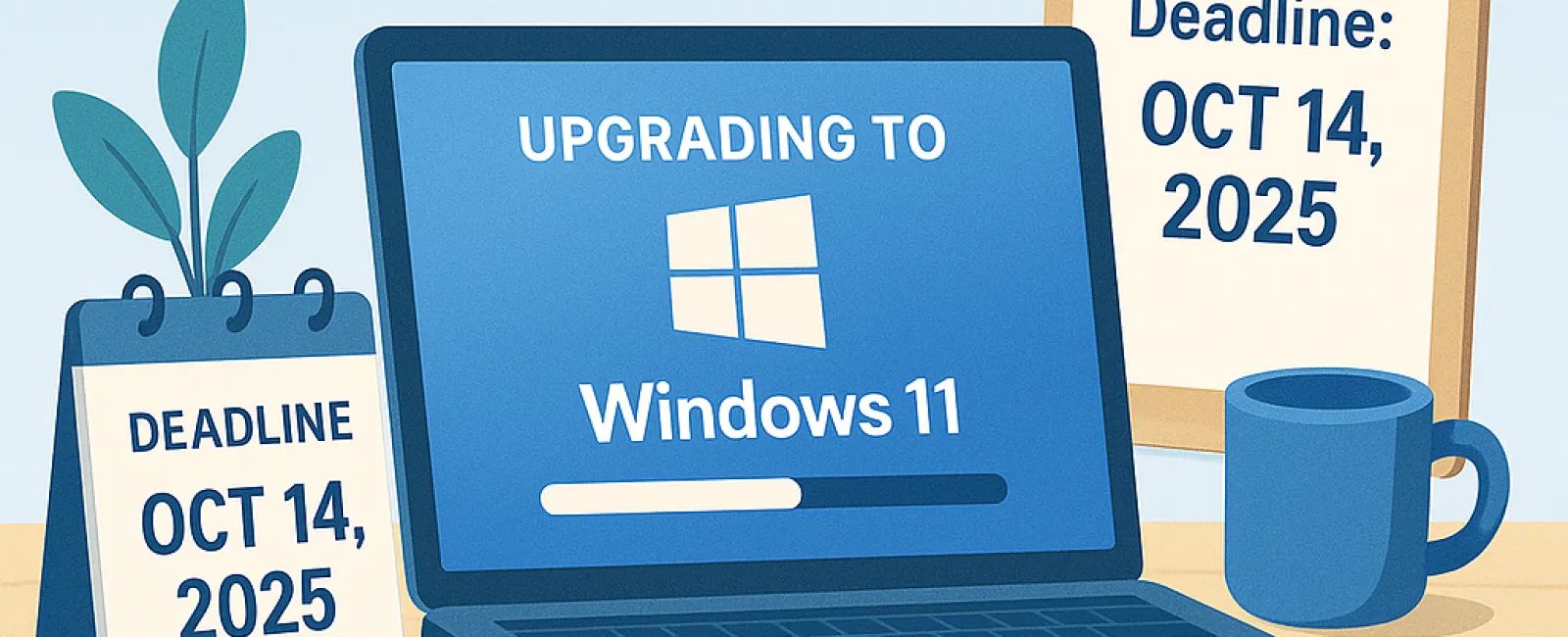June 23, 2025
If you're still running Windows 10 on your business machines, let's cut to the chase: The clock is ticking.
On October 14, 2025, Microsoft is officially ending support for Windows 10. That means no more security patches, no more bug fixes and no more technical support.
But here's what business owners really need to understand: The cost of waiting isn't just about someday needing to upgrade.
It's about what waiting could cost you in the meantime.
"We'll Deal With It Later" Is An Expensive Strategy
We get it - upgrading every machine in your business isn't exactly your idea of a fun budget item. It feels easy to delay… until something breaks.
But here's what procrastination actually costs:
1. You're Operating Without A Safety Net
Once Microsoft stops updating Windows 10, every new vulnerability becomes your problem.
Hackers target outdated systems because they're easy marks. It's like locking the front door but leaving the windows wide open.
One security breach could cost you thousands—or even your entire business.
2. Software And Hardware Compatibility Issues
Many business apps, such as accounting tools, CRMs and industry-specific platforms, are already dropping support for Windows 10.
If your systems fail mid-project or crash during a client demo, what does that cost you?
It's not just software. New printers, peripherals and security tools may no longer work with your outdated operating system.
3. Lost Productivity
Old systems run slower, crash more often and frustrate your team. Even small delays add up, lowering efficiency, morale and your competitiveness.
If each employee loses 10 to 15 minutes a day to tech issues, what does that add up to over a month?
4. Emergency Upgrades Are Always More Expensive
Waiting until your systems fail or your team can't work creates panic and expensive last-minute fixes:
- Emergency hardware orders
- Rush IT labor fees
- Business interruptions while machines are replaced
A bit of planning now saves a lot of scrambling—and money—later.
5. You're Risking Compliance Violations
If your business handles sensitive data or follows regulations like HIPAA or PCI-DSS, using unsupported systems could lead to fines or lawsuits. Most regulatory standards require up-to-date security, and Windows 10 won't meet those after October.
What Smart Business Owners Are Doing Now
They're getting ahead of the deadline by not only upgrading devices but also using this change to:
- Audit which devices need replacement
- Streamline tools and software
- Strengthen cybersecurity
- Plan IT spending wisely for 2025
How To Make The Transition Smooth
Here's what we recommend:
- Run a compatibility check—Not all machines support Windows 11. Identify which need replacing.
- Audit your apps—Ensure your essential software works on Windows 11 or newer.
- Budget for hardware now—Avoid supply chain delays later.
- Partner with an IT provider—We can manage the transition from start to finish with no downtime or surprises.
Don't Wait Until October To Panic
Delaying until the last minute will cost you more in money, stress and missed opportunities. We're helping small businesses upgrade smartly: planned, smooth and optimized for future growth.
Click
here or give us a call at 703-879-2070 to book your FREE 15-Minute Discovery Call and we'll help you identify what
needs upgrading, what can stay and how to build a transition plan that won't
disrupt your business before the deadline.




